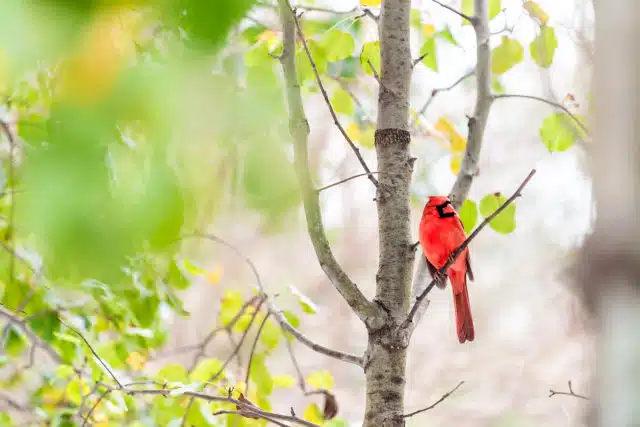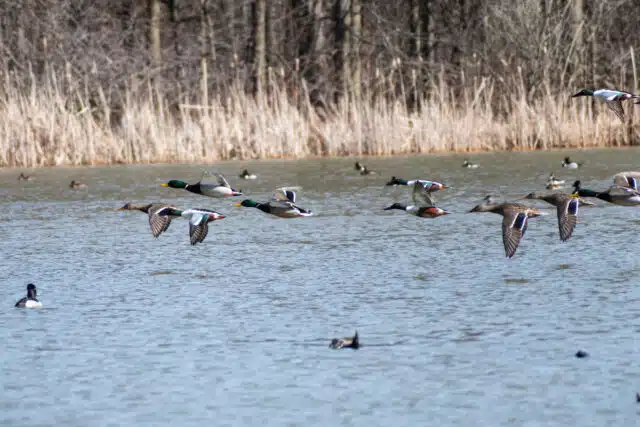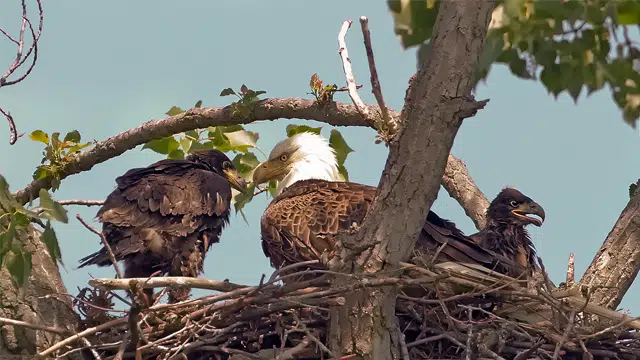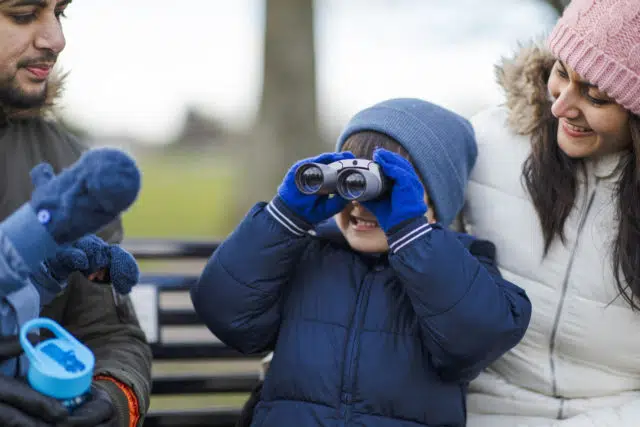
Biologists use many tools to study birds and their behavior – binoculars, cameras, automatic recorders – but one of the simplest tools is the leg band. Leg bands have been used for various purposes for more than 2000 years. The earliest scientific use in North America was by John James Audubon, who documented Eastern Pheobes returning to their nest site the year after being banded. The basic idea of bird banding is that by attaching a unique identifier (in this case, a metal band with a unique 9-digit number) to a bird, we can learn about lifespan, movements, and seasonal activities of that bird.
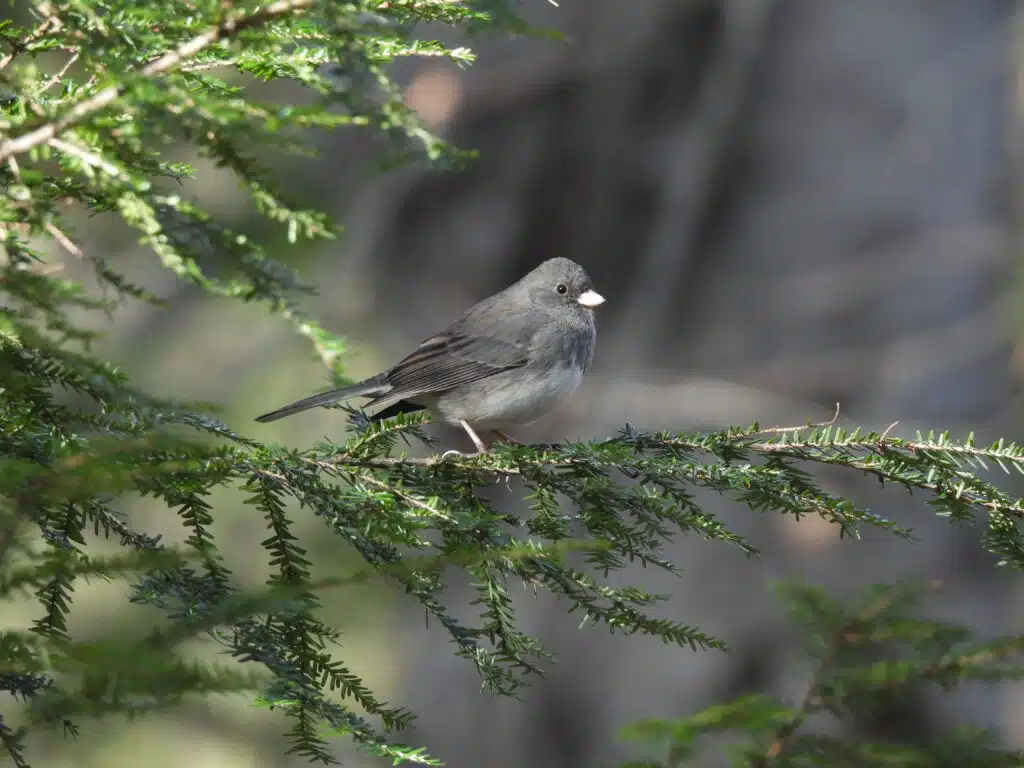
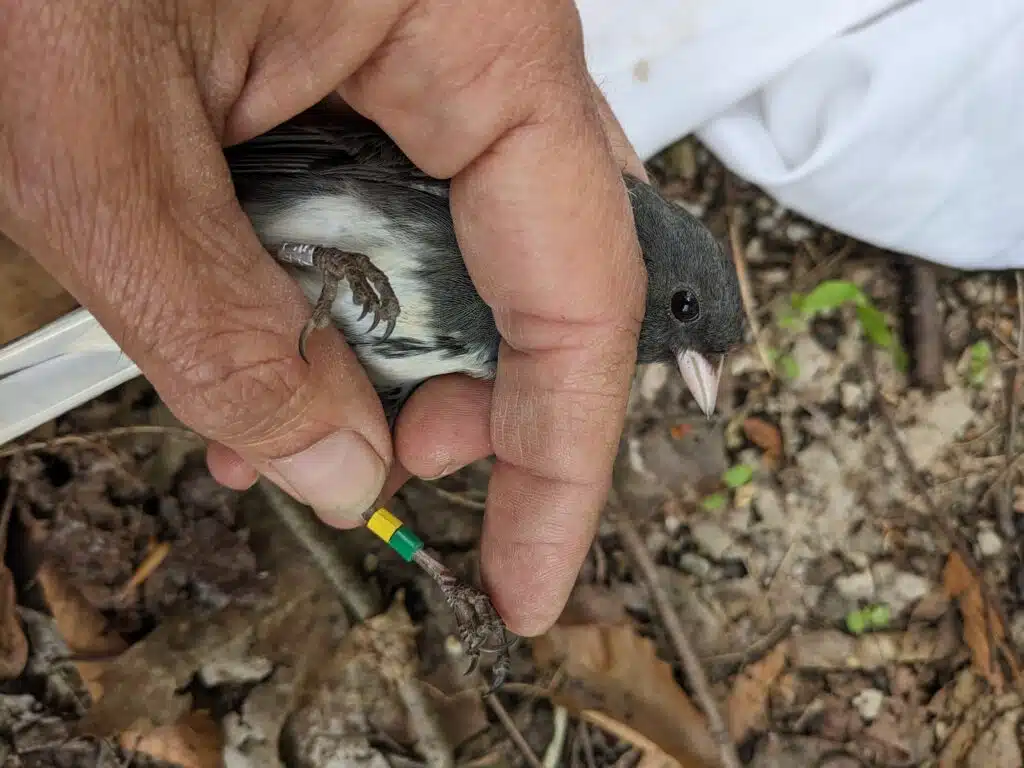

At Holden we use not only the standard metal leg band, but plastic color bands and radio transmitter tags (kind of a modern tech version of the leg band) to learn more about our birds. Holden’s nest box program (with more than 200 nesting structures) produces nearly 1000 native birds per season. All of these birds are banded as young in the nest. When one of these birds is recovered, we can learn about its lifespan, seasonal movements, and dispersal. For example, we know that Tree Swallows fledged from Holden usually return to within a few miles of their hatching location, despite migrating 1000s of miles each year, and can live up to 9 years.
We use color leg bands in our Dark-eyed Junco study to be able to quickly identify individuals without having to read the number on their metal band. By creating unique color combinations from 6 different colors, we can distinguish one junco from another without having to capture the bird. Our color banding has provided strong evidence that the juncos that breed at Holden do not migrate south during the winter – we find our color banded birds here (usually very close to summer territories) all year long. We have also begun using radio transmitter tags, which emit signals that can travel over a mile, to find and track the movements of juncos. This helps us understand territory size and seasonal movements on a finer scale.
Over the last few weeks, we’ve spend time with our summer camps participants, showing young campers how we band and track birds at the Holden Arboretum. It’s been a highly rewarding experience seeing the faces of campers as they get an up close look at the birds who call our campus home.
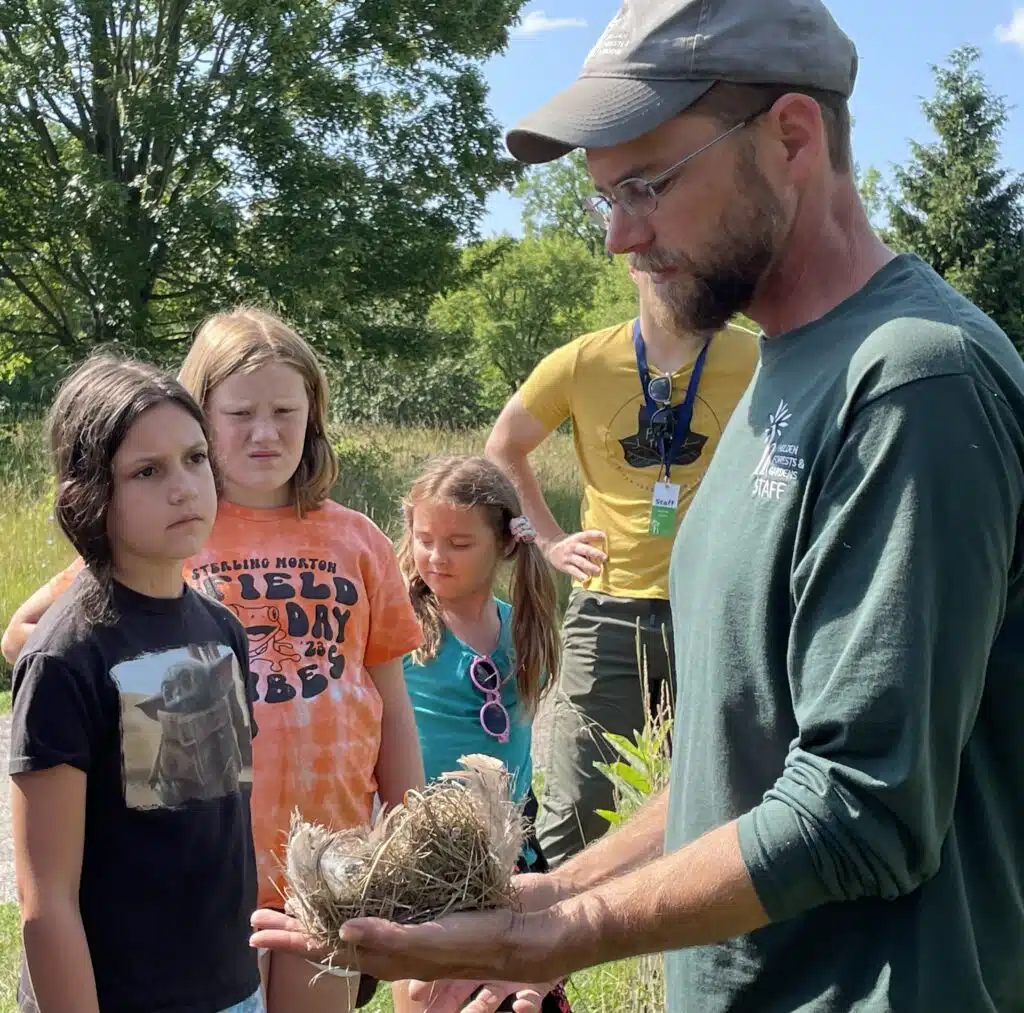

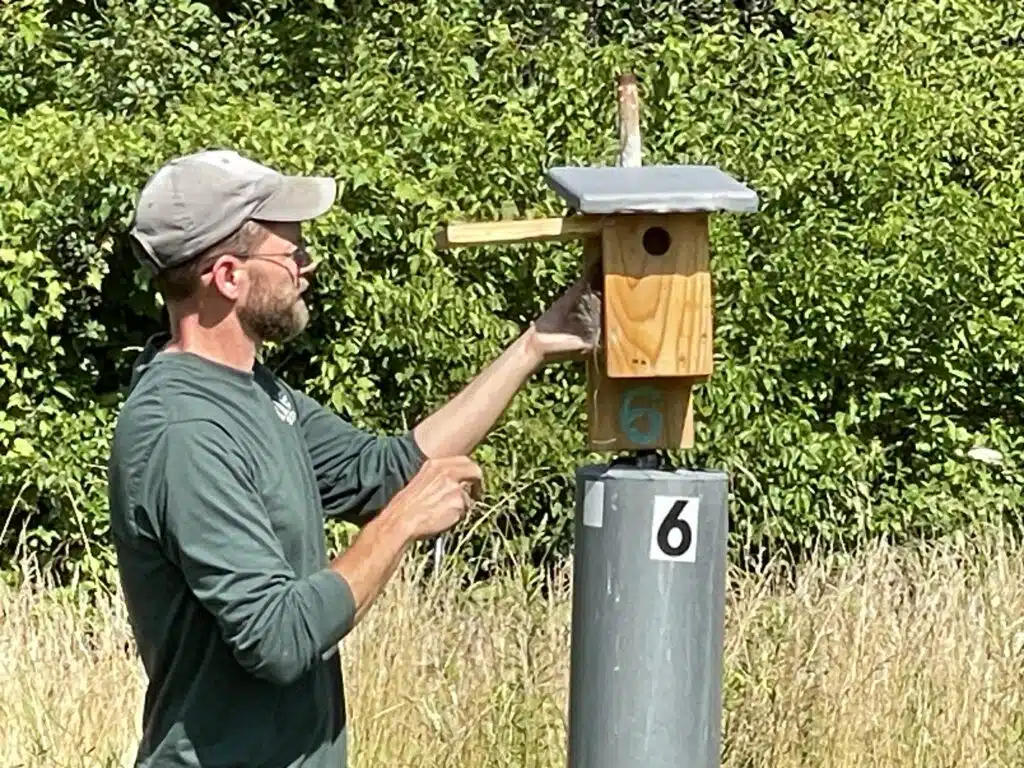
Sources: https://nc.audubon.org/news/history-bird-banding-part-i
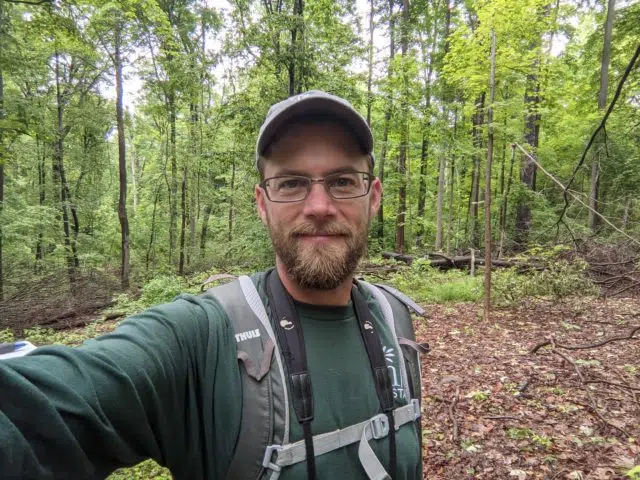
Mike Watson
Conservation Biologist
Mike has been the Conservation Biologist at Holden since 2007. His work focuses primarily on wildlife issues such as bird and bat surveys, conservation efforts to support species and/or communities, deer population management, and human-wildlife conflicts. Specific projects include coordinating Holden’s nest box program to support a variety of native cavity-nesting bird species, tracking changes in bat activity in response to forestry treatments, and tracking seasonal movements of the local breeding population of dark-eyed juncos. Mike also assists with non-wildlife projects, including beech leaf disease assessments, deer browse impacts to native vegetation, and hemlock woolly adelgid monitoring.
